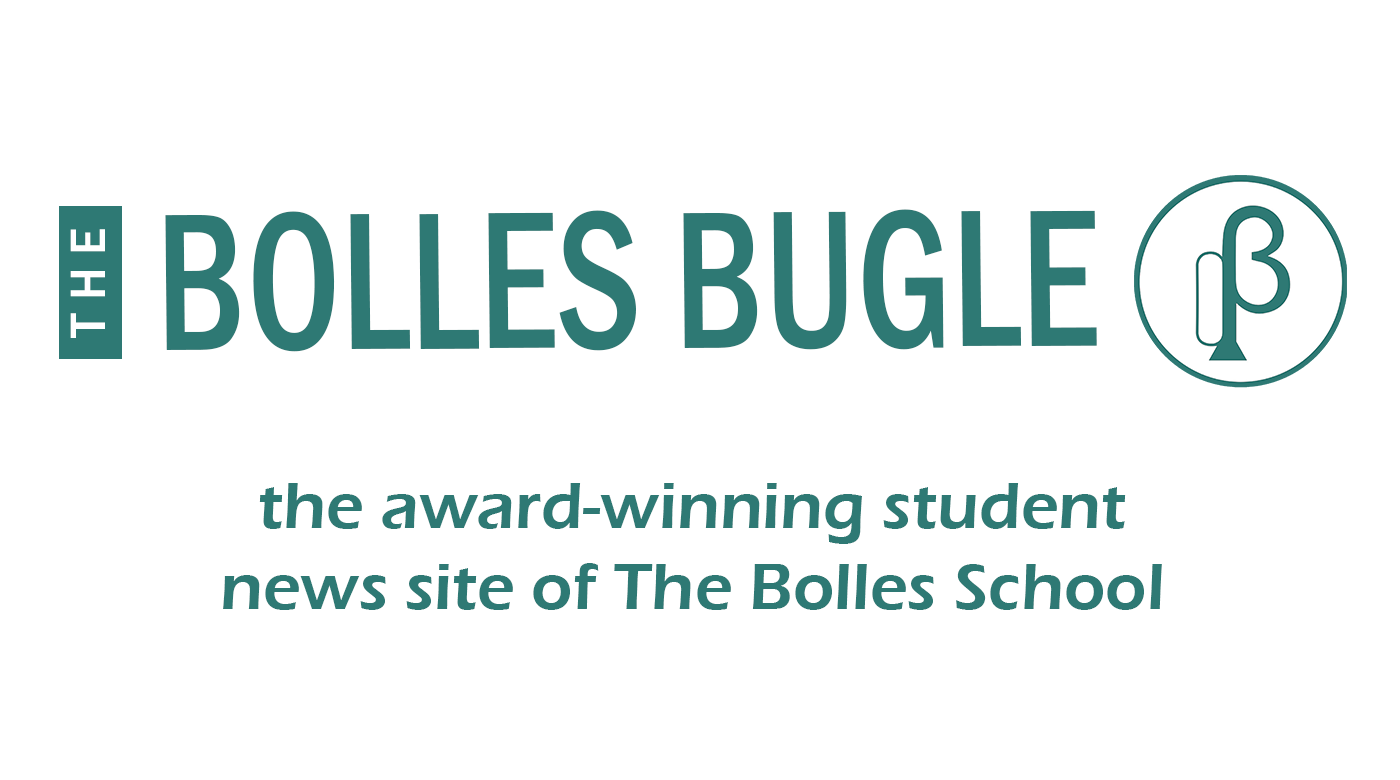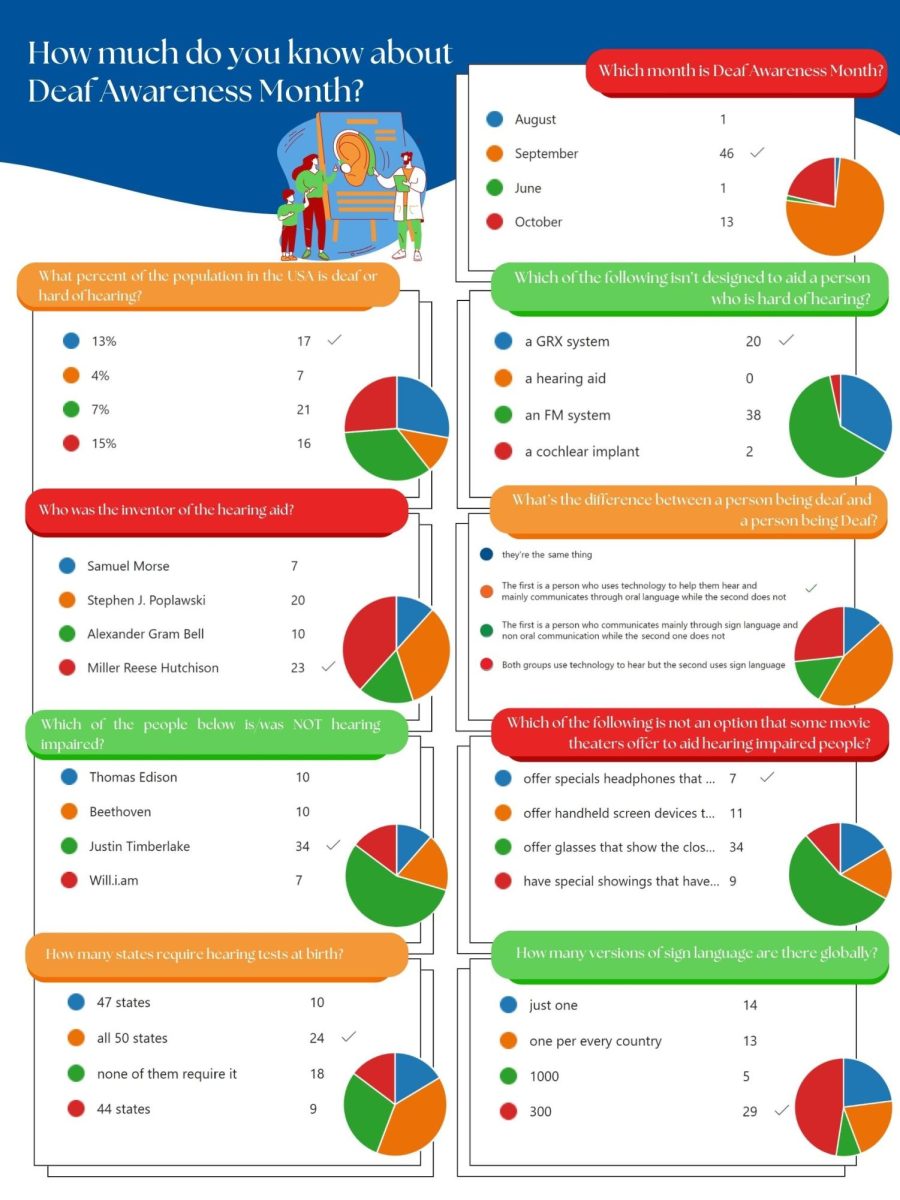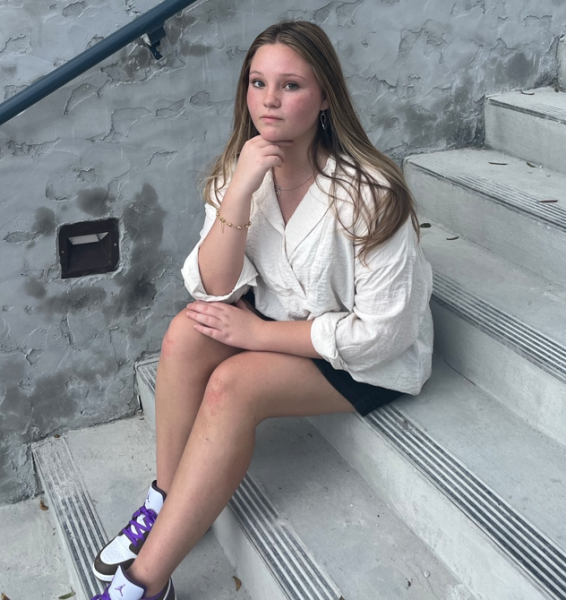The end of September marks the end of National Deaf Awareness Month. In 1997, the National Association of the Deaf first introduced Deaf Awareness Month as a way to promote a greater understanding of the deaf community. Because Bolles is a mainstream school, meaning both hearing people and hard of hearing people attend the school, hearing people don’t always realize how the school day is different for people who are hard of hearing. During September, the objective is to spread consciousness about the deaf world.
It’s easy to be in the dark about the nuances of hearing loss because we aren’t taught about them in mainstream schools, and it can be uncomfortable to ask. If a person is fully hearing, it doesn’t seem like it really affects them. However, it is important for everyone to have a better understanding of deafness, because the truth is, 13% of people just in the United States are deaf or hard of hearing, and becoming more educated makes us more understanding human beings. For now, my goal is to clear up just a few common misconceptions about hearing loss.
The first aspect of deafness that is unknown by most hearing people is the difference between capital D Deaf and lower-case d deaf. Deaf people are members of the deaf community who do not use technology to help them to hear. Deaf people typically do not communicate through oral speech and use sign language and other non-verbal methods of communication.
In contrast, deaf people are members of the deaf community who do use technology to aid them in hearing, like cochlear implants, hearing aids, FM Systems, or BAHAs. They communicate through oral speech and most do not know sign language or do not speak it fluently.
So when you meet someone who is deaf, you shouldn’t immediately expect them to know sign language because many people in the deaf community never have to use sign language. Instead, many people understand people through reading lips and using systems to amplify sound.
Of course, there are some Deaf people who can speak spoken language fluently and there are many deaf people who know sign language fluently.
The second misconception to address is the difference between Deaf culture and deaf community. The deaf community encompasses every person that is deaf or hard of hearing. It is highly diverse and both Deaf and deaf people fall under this umbrella. The deaf community is made up of individuals who share common experiences regarding hearing and is very large.
However, Deaf culture is only comprised of those who are capital D Deaf. Deaf culture is based on sign language and includes specific traditions, values, and behavior norms associated with the deaf community. Because of this, a person who wears hearing aids is a part of the deaf community but not Deaf culture.
Another common misconception revolves around sign language. Some hearing people think that sign language is a fake “language” that involves a person flailing their hands around in an attempt to communicate. In reality, sign language is a complicated language that even has its own grammatical rules, sentence structures, and slang. Another common misconception about sign language is that it is universal. There are actually over 300 versions of sign language worldwide and it varies from region to region. In the US we use ASL which stands for American Sign Language but in other countries the words and even sentence structure could be different.
The deaf community is always looking to improve technology aiding people in hearing and looking to increase easier accommodations for Deaf people, especially students. Now in 2023, more colleges are starting to offer sign language interpreters and captionists for all deaf students. This not only helps deaf students, but hearing students as well. When a captionist is transcribing lectures for a class, hearing students also have access to the transcription and are able to double check their notes or reference the transcription when they miss something the professor said.
These accommodations, while important and incredibly beneficial, can be expensive and despite most top colleges offering the services, it just isn’t reasonable to expect most mainstream high schools to offer them yet. However, there are other ways teachers and students alike can make a deaf person’s learning experience easier. For example, teachers can double check that videos they play in class have closed captions on them. Teachers can also make sure they are lecturing in a way that allows all students to see their face, allowing students who might be deaf to read their lips and understand them. For both teachers and students, making sure it is possible for deaf people to read their lips is extremely helpful. This does not mean over exaggerating your words or yelling at a person, it just means not covering your face with your hand when you talk, facing the person you are talking to, and being willing to repeat what you said when asked.
It sounds simple but doing these things makes a world of difference to a deaf student and even by reading this article, you are hopefully now more educated about the deaf community.




